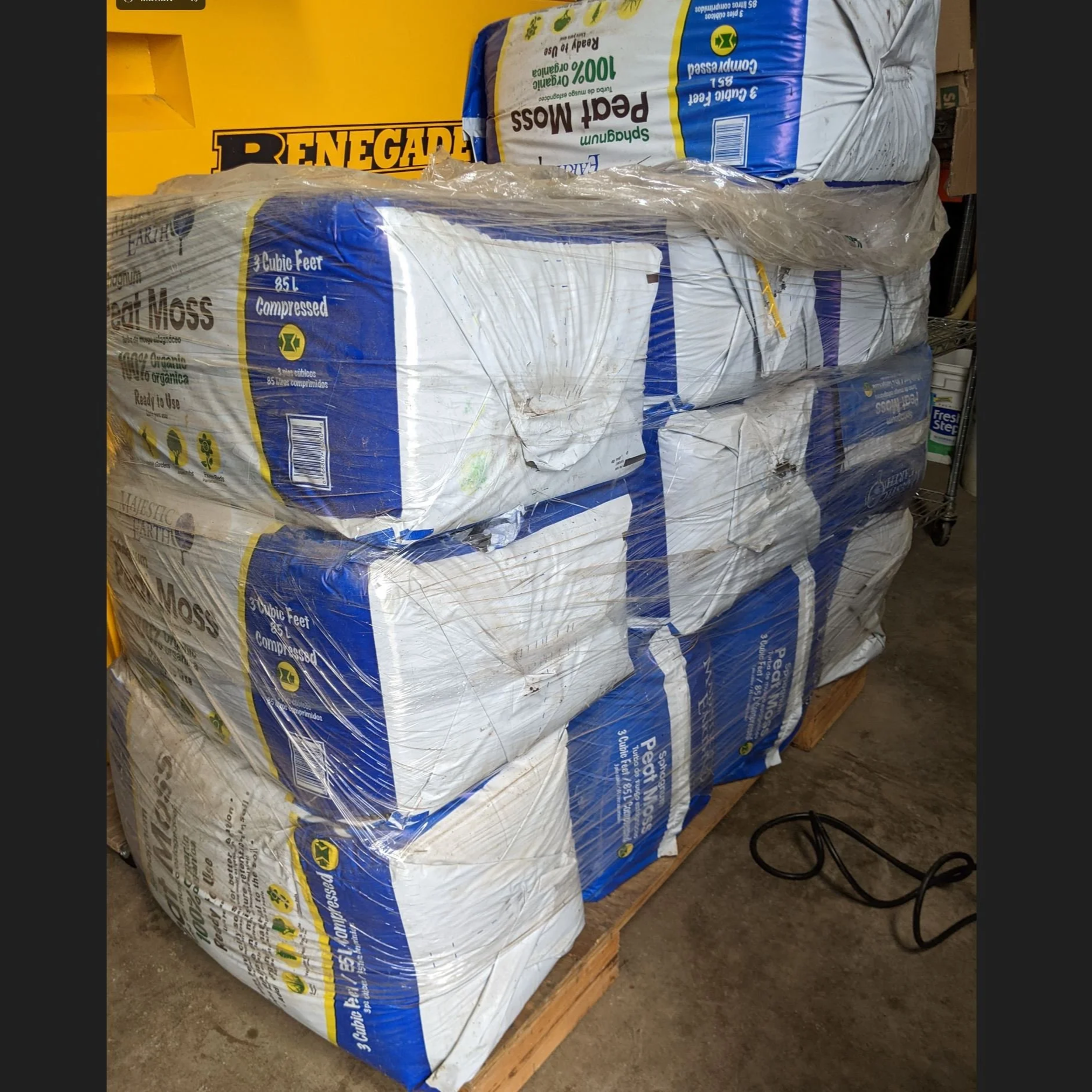 Image 1 of 3
Image 1 of 3

 Image 2 of 3
Image 2 of 3

 Image 3 of 3
Image 3 of 3




Majestic Earth Sphagnum Peat Moss
Rather let’s say, ambitious, amounts of compressed Majestic Earth sphagnum peat moss were purchased ten years ago. Much was used that summer, but much remained to survive many more seasons untouched by human hands. When the hands touched it, the bags did not always fair so well. The bag might crumble on you, but the block will need to be strongly persuaded to do so.
Properties:
If you use it with sandy soil, it can hold water.
If you use it in clayey soils, it loosens the mixture for better drainage.
It is a major component for soil-based as well as soilless potting mixtures since it has excellent soil aeration properties.
Sphagnum peat moss can easily hold a large amount of water, about 10-20 times its weight (depending who you ask).
Peat most is particularly suited to acid-loving plants and can slightly lower the pH of alkaline soils.
Sphagnum peat moss grows in moist tundra-type areas, and comes from peat bogs in northern Canada.
Each block expands to 3 cubic feet.
The intact bags are available to you however you wish to haul it off - whole skid, or the blocks can be shrink-wrapped or dropped it in a barrel or 20 gallon container. The product that didn’t hold together was put in a 50 gallon (once upon a time - food grade) barrel with an air-tight lid. Keep in mind that the bales are compressed. Again, that’s the dig. If you want the whole barrel, you have to keep the barrel. If you want the skid, you get to keep the skid.
Rather let’s say, ambitious, amounts of compressed Majestic Earth sphagnum peat moss were purchased ten years ago. Much was used that summer, but much remained to survive many more seasons untouched by human hands. When the hands touched it, the bags did not always fair so well. The bag might crumble on you, but the block will need to be strongly persuaded to do so.
Properties:
If you use it with sandy soil, it can hold water.
If you use it in clayey soils, it loosens the mixture for better drainage.
It is a major component for soil-based as well as soilless potting mixtures since it has excellent soil aeration properties.
Sphagnum peat moss can easily hold a large amount of water, about 10-20 times its weight (depending who you ask).
Peat most is particularly suited to acid-loving plants and can slightly lower the pH of alkaline soils.
Sphagnum peat moss grows in moist tundra-type areas, and comes from peat bogs in northern Canada.
Each block expands to 3 cubic feet.
The intact bags are available to you however you wish to haul it off - whole skid, or the blocks can be shrink-wrapped or dropped it in a barrel or 20 gallon container. The product that didn’t hold together was put in a 50 gallon (once upon a time - food grade) barrel with an air-tight lid. Keep in mind that the bales are compressed. Again, that’s the dig. If you want the whole barrel, you have to keep the barrel. If you want the skid, you get to keep the skid.
Rather let’s say, ambitious, amounts of compressed Majestic Earth sphagnum peat moss were purchased ten years ago. Much was used that summer, but much remained to survive many more seasons untouched by human hands. When the hands touched it, the bags did not always fair so well. The bag might crumble on you, but the block will need to be strongly persuaded to do so.
Properties:
If you use it with sandy soil, it can hold water.
If you use it in clayey soils, it loosens the mixture for better drainage.
It is a major component for soil-based as well as soilless potting mixtures since it has excellent soil aeration properties.
Sphagnum peat moss can easily hold a large amount of water, about 10-20 times its weight (depending who you ask).
Peat most is particularly suited to acid-loving plants and can slightly lower the pH of alkaline soils.
Sphagnum peat moss grows in moist tundra-type areas, and comes from peat bogs in northern Canada.
Each block expands to 3 cubic feet.
The intact bags are available to you however you wish to haul it off - whole skid, or the blocks can be shrink-wrapped or dropped it in a barrel or 20 gallon container. The product that didn’t hold together was put in a 50 gallon (once upon a time - food grade) barrel with an air-tight lid. Keep in mind that the bales are compressed. Again, that’s the dig. If you want the whole barrel, you have to keep the barrel. If you want the skid, you get to keep the skid.